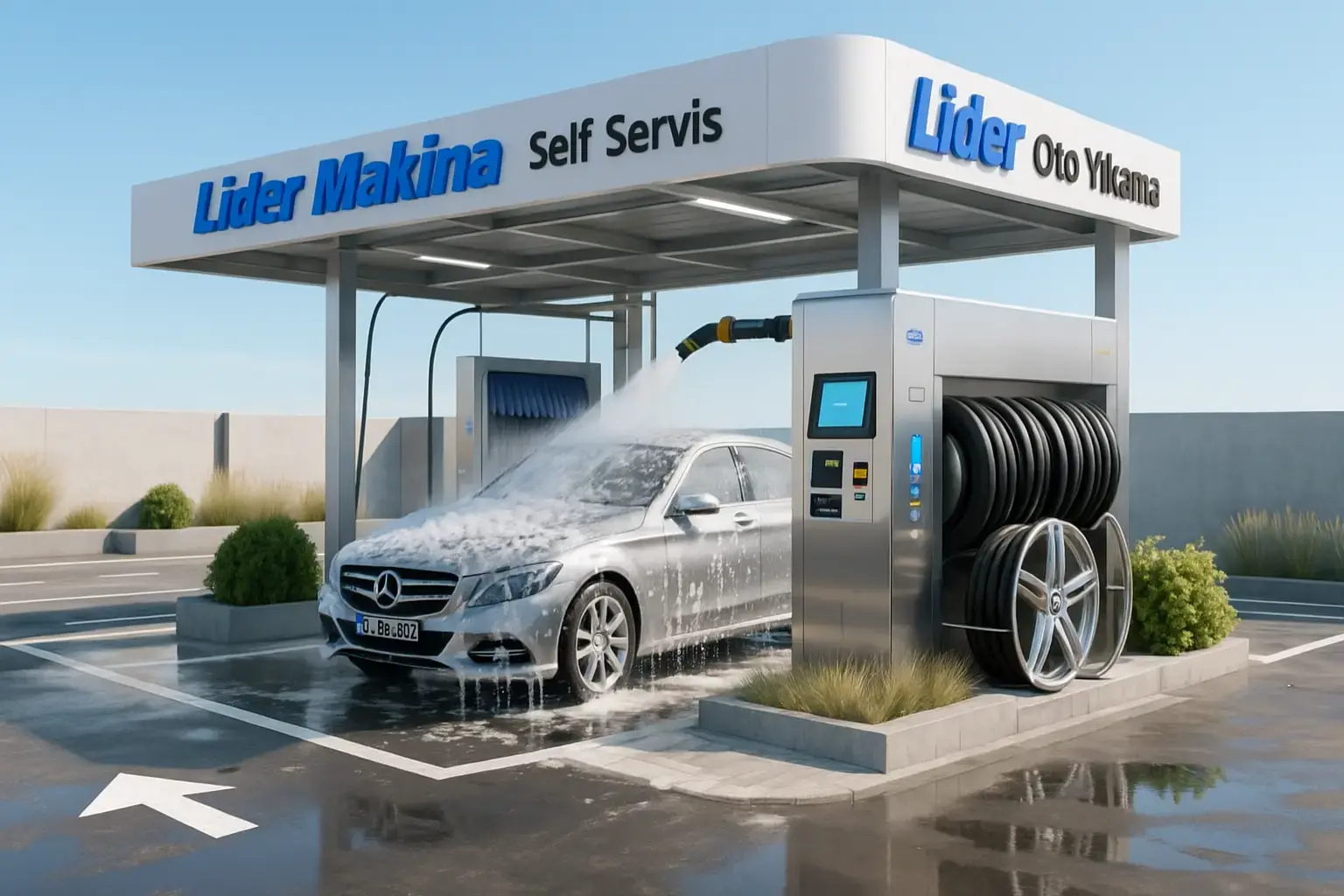Energy and Water Savings Methods in Self-Service Car Washes
Self-service car wash systems offer both environmental and economic gains. By applying Energy and Water Savings Methods, you first reduce your water consumption and lower your bills. At the same time, focusing on energy efficiency drives down your electricity expenses. Moreover, eco-friendly practices strengthen customer loyalty. Below, you’ll find four main sections—each with two detailed techniques.
1. Water Consumption Reduction Methods
1.1 Low-Pressure Washing Modes
First, choose low-pressure programs to cut water use by 30–40%. For example, a bay that normally uses 10 m³ per day can save about 120 m³ per month in this mode. As a result, your annual water bill drops by tens of thousands of TL.
1.2 Recycled Water Systems
Also, install a recycled-water setup that passes graywater through biological and mechanical filters, recovering 50–70% of the volume. Then you pump the filtered water back into the high-pressure line. This halves your daily fresh-water demand and significantly lowers costs.
2. Boosting Energy Efficiency
2.1 LED Lighting
Switch from incandescent or fluorescent lamps to LEDs, which use 60–80% less energy. LEDs emit less heat, so they also reduce your HVAC load. Consequently, you can cut monthly electricity bills by up to 20%.
2.2 Smart Motor and Pump Controls
Meanwhile, invertor-driven (VFD) pump motors adjust their speed according to water demand. During low-use periods, they run slower and avoid wasteful power draw. In addition, adding power-factor correction (PFC) units further boosts efficiency.
3. Equipment Selection and the Role of Maintenance
3.1 High-Efficiency Pumps and Motors
Invest in A+ (or higher) rated pumps and motors. They deliver the same hydraulic performance with lower kilowatt consumption. Although the upfront cost runs higher, you typically recoup the investment in energy savings within 3–5 years.
3.2 Regular Maintenance Programs
Keep performance high by scheduling:
• Monthly filter cleaning
• Quarterly lubrication and seal checks
• Annual pressure tests and control-panel updates
These steps preserve pump efficiency in the 5–10% range and prevent unexpected downtime.
4. Operational Strategies
4.1 Optimizing Operating Hours and Bay Management
Start the second wash bay during peak periods (e.g. 07:00–09:00 and 18:00–20:00) to distribute customer flow. This balances water and energy demand, reduces peak loads, and shortens wait times.
4.2 Staff Training and Awareness
Train your team on habits like closing water valves, engaging standby modes, and calibrating sensors. Share regular savings reports and reward achievements. This builds a culture of conservation across your operation.
Conclusion
By implementing these Energy and Water Savings Methods in your self-service car wash, you can slash water and electricity costs significantly. You’ll meet your environmental responsibilities and simultaneously boost profitability and customer satisfaction.





Comments are closed